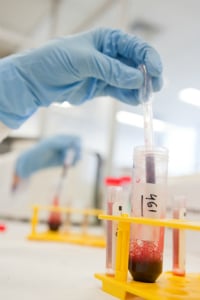
True or false: A bone marrow donor must be a family member of the person who needs the transplant.
12 April 2015
False.
For any person—child or adult—who needs a bone marrow transplant, the first step is to ask family members if they are willing to donate their stem cells, and then conduct tests to determine if they are a match for the patient. Siblings are much more likely to be matched than parents but only about 30 per cent of people needing a transplant will have a compatibly matched sibling.
A person requires a bone marrow transplant when their blood is not healthy enough to support them or to fight an underlying disease. The two general categories for bone marrow transplants are:
- autologous, which is a transplant using a person’s own (previously harvested) stem cells; and
- allogeneic, which is a transplant using stem cells donated from someone else
In the case of allogeneic transplants, identifying a potential donor who can give their stem cells to another person involves analyzing the human leukocyte antigens (HLA), which are proteins found on the surface of the blood and in tissue cells. The HLA must be as closely matched as possible so that the transplant recipient’s body can ‘accept’ the new stem cells into their bone marrow. Just as important, matching at HLA will decrease the chance of the new marrow reacting against the patient, a reaction called graft versus host disease. When a stem cell transplant is successful, the new stem cells work to produce healthy red blood cells, white blood cells, and platelets.
When a donor can’t be found within a family, then a search is performed for an unrelated donor or cord blood. The development of donor registries in Canada and other countries has been a major step forward in helping people find compatible donors. In fact, according to information from Canadian Blood Services more than 80 per cent of Canadians who have had transplants were helped by donors living outside Canada.
